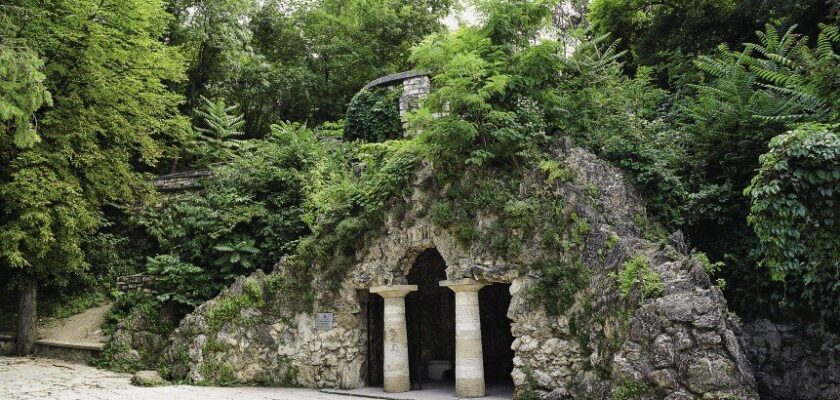Diana’s Grotto
Diana’s Grotto is a picturesque artificial cave on the slope of Goryachaya Mountain in Pyatigorsk. Landscape monument, bearing the name of the ancient Roman goddess, is very popular with tourists coming to Pyatigorsk. In the XIX century in the beautiful grotto loved to rest Pyatigorsk youth.
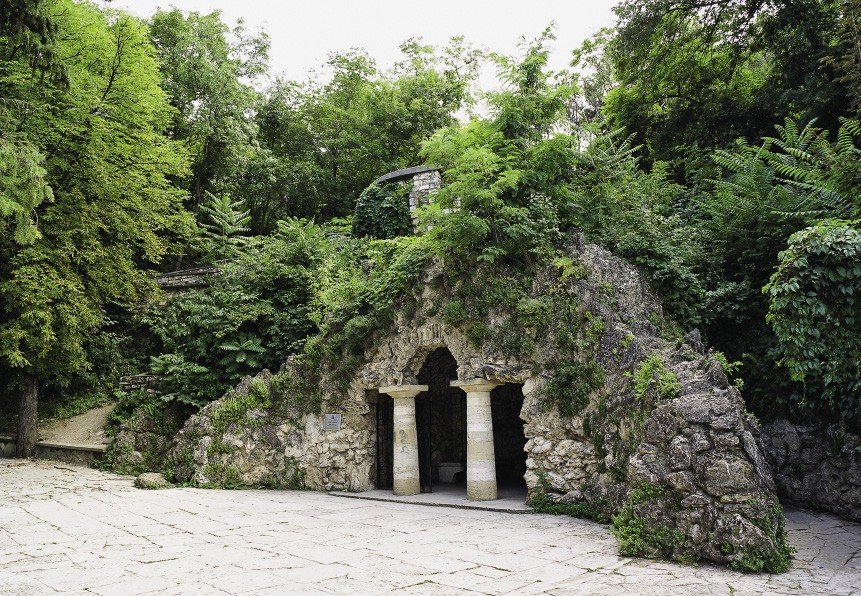
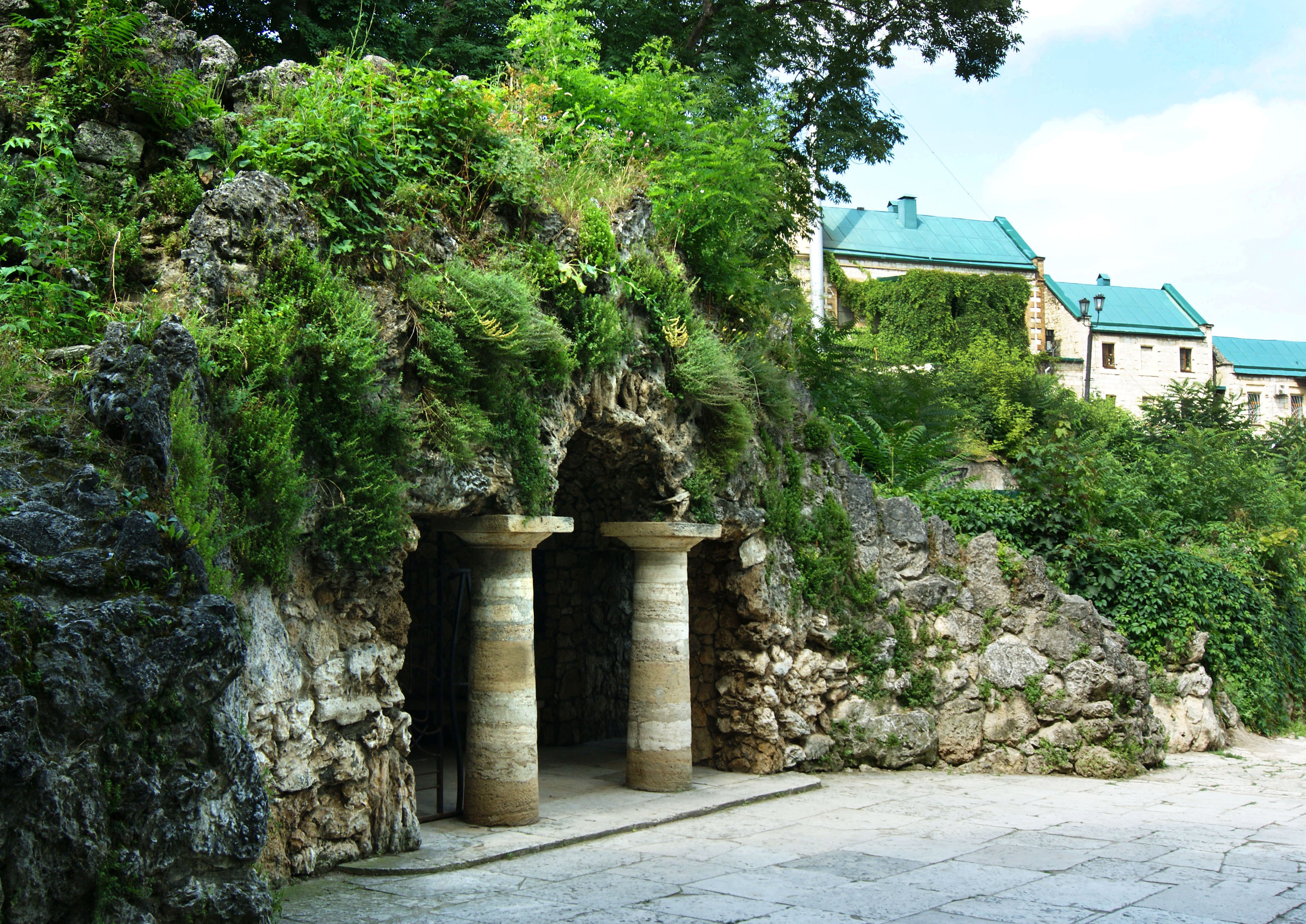
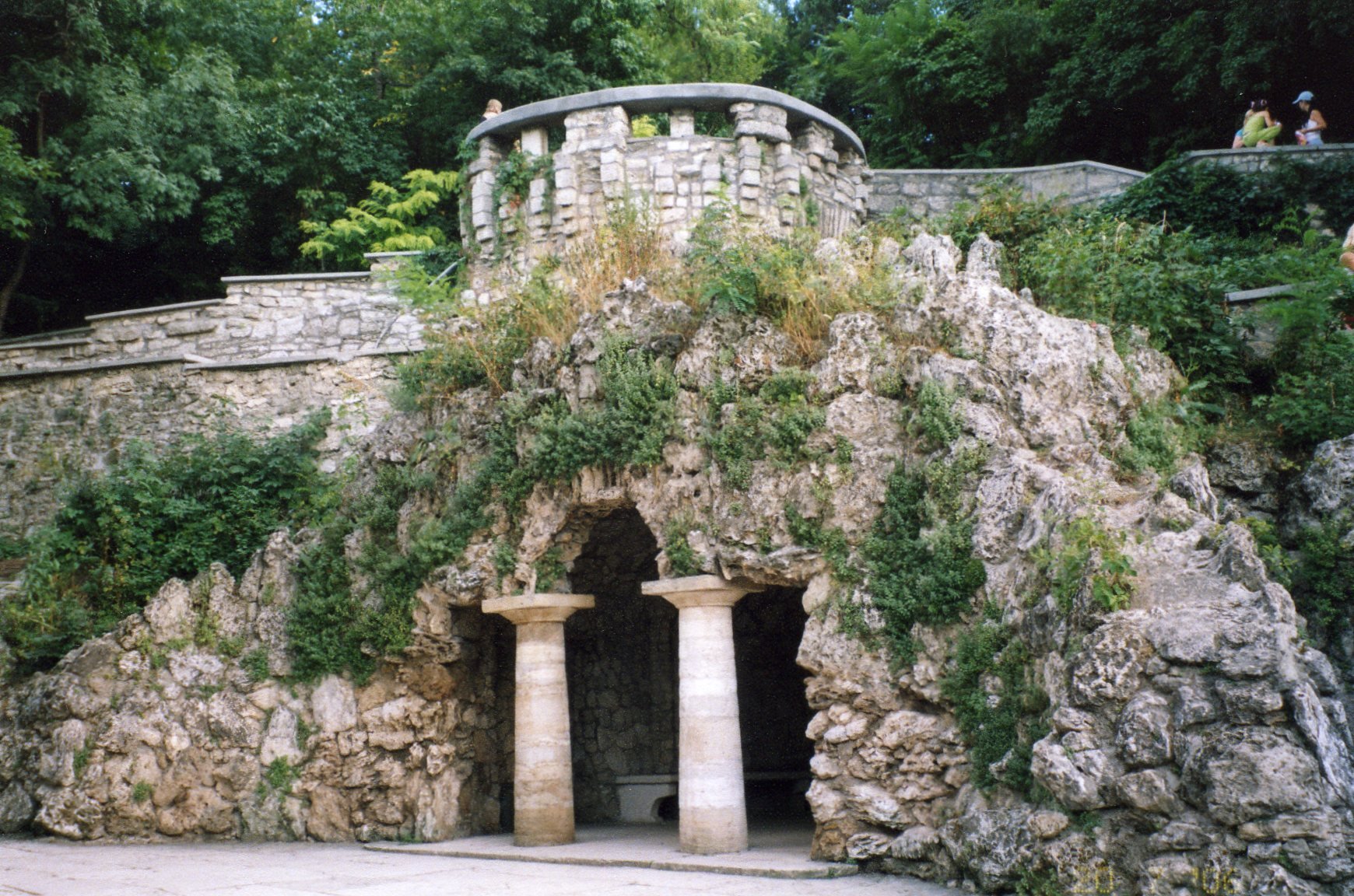
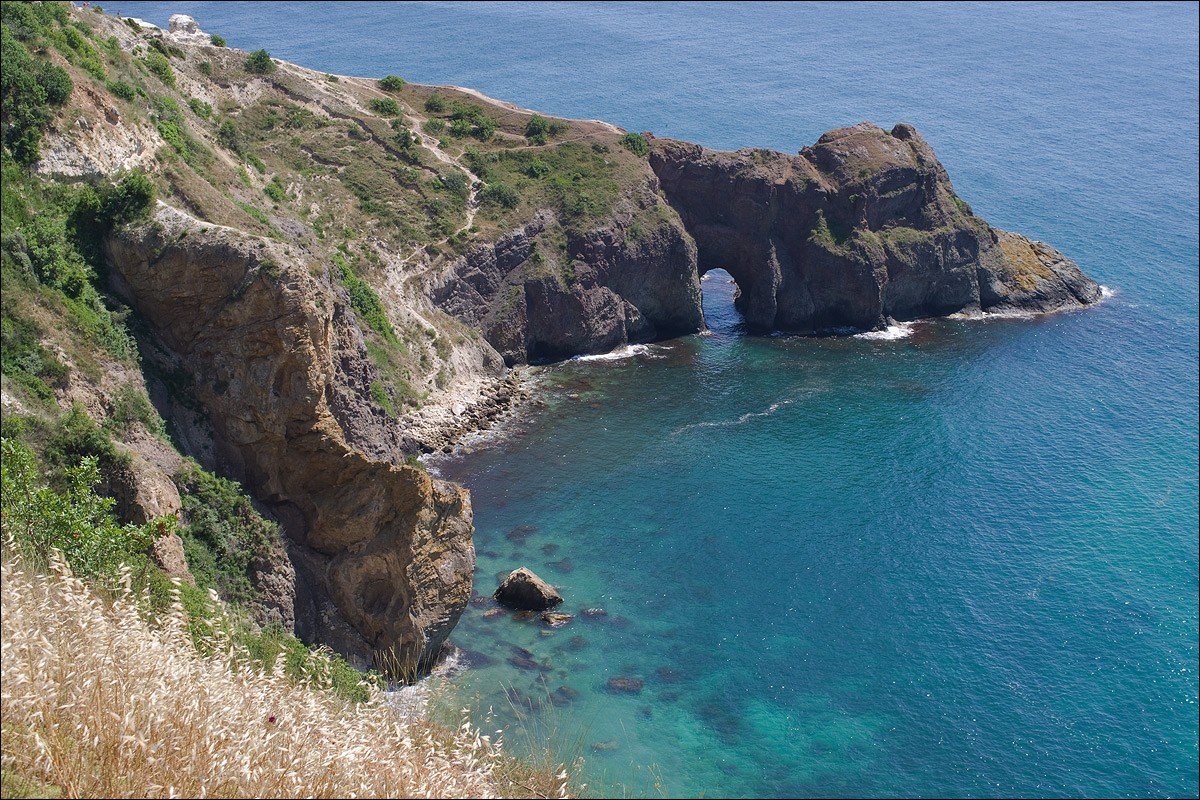
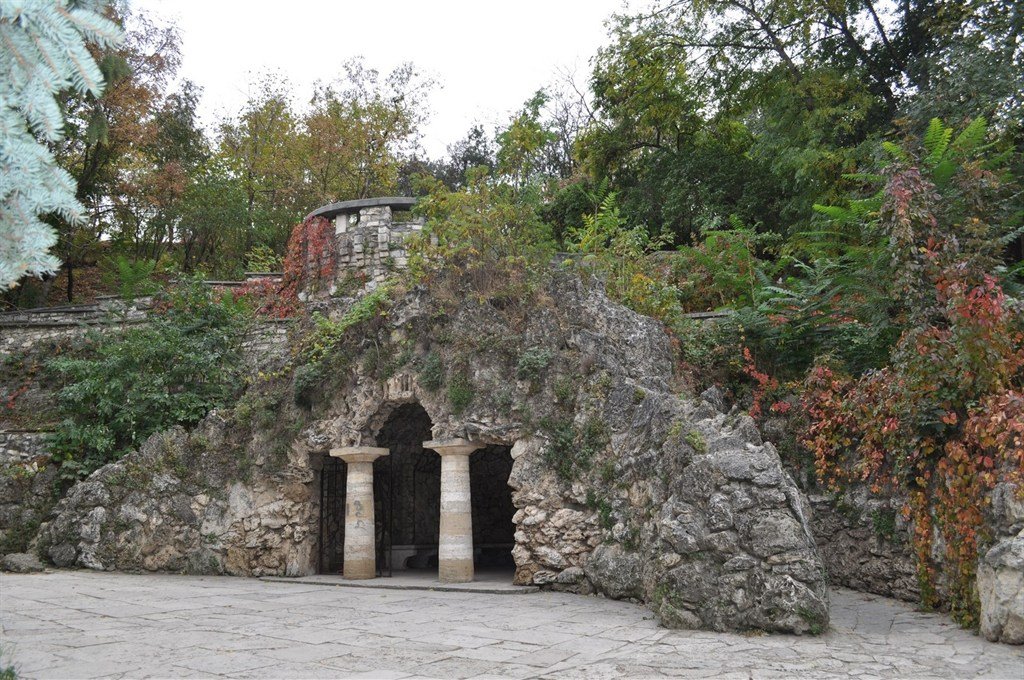
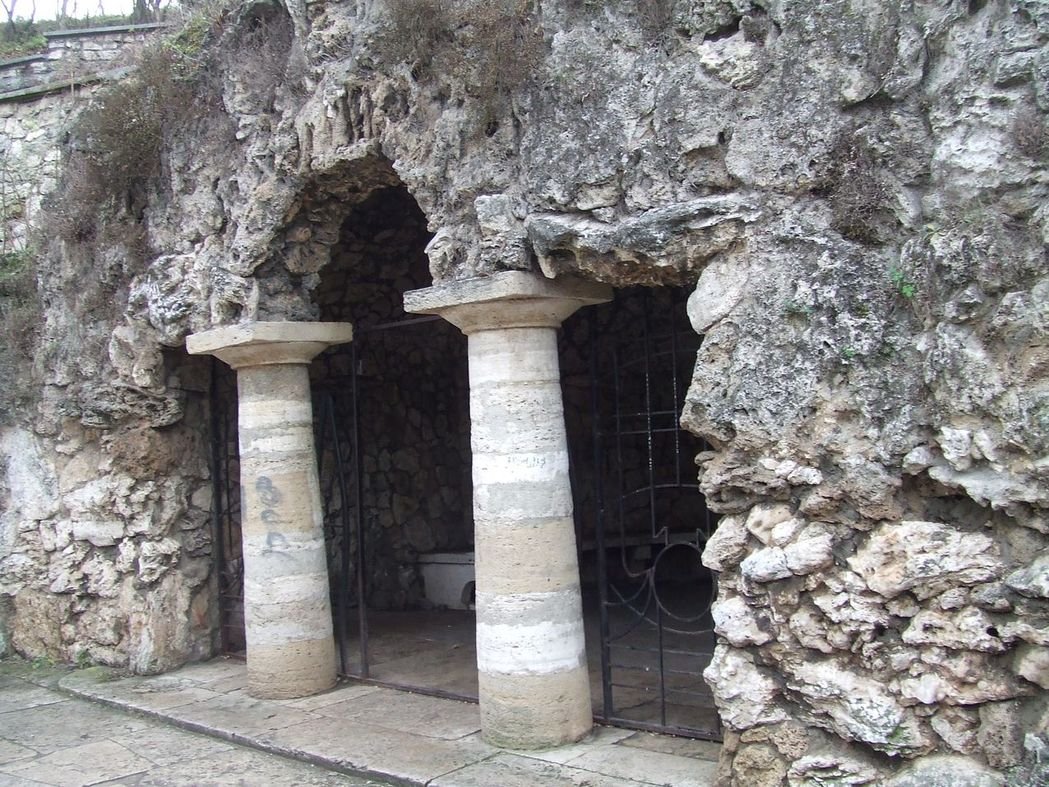
General information
Romantic place very much liked M. Y. Lermontov. A week before the fatal duel, in July 1841, the poet and his friends held a ball “by subscription” at the cave, which became the last ball in Lermontov’s life.
For the party, the cave vault was decorated with colored shawls, tying them under the ceiling, the stone walls were draped with beautiful carpets and arranged inside lighting from improvised chandeliers. Upstairs, above the entrance, an orchestra played, and the owner of one of the hotels in Pyatigorsk provided refreshments for the guests. Couples danced on a spacious platform in front of the arch of the grotto, and around, in the trees hung about two thousand colored lanterns. According to the stories of Lermontov’s friends, a lot of people came to the ball. The celebration continued late into the night, the poet himself also danced and was extremely cheerful.
.
In the 1970s, Diana’s grotto was well restored. Its back wall is a natural rock on the slope of Mount Horyachaya, and the other walls are built of tufa. The entrance arch is decorated with two classical columns made of stone from Mashuk Mountain. The side entrances continue with sloping walls, and the floor is made of hewn stone slabs.
.In the old days, the side entrances were closed with wooden doors, and in the center of Diana’s grotto stood a round table. Now a narrow semi-circular stone bench is placed along the walls for visitors to rest. To the right of the entrance you can see a plaque dedicated to M. Y. Lermontov.
.The beautiful building has long become one of the notable corners of the green park. To look at it come as residents of Pyatigorsk, as well as tourists, especially since you can visit near Diana’s Grotto at any convenient time.
.
History of Diana’s Grotto
The cave on the mountainside was built in honor of the first conquest of Mount Elbrus. In the summer of 1829, an expedition led by General Georgy Arsenievich Emmanuel managed to climb the Caucasian giant, guided by a local resident – Kabardian Kilar Khashirov. It is noteworthy that out of the entire expedition only Khashirov visited the summit.
In honor of the outstanding event, two cast-iron plates were cast, which they wanted to install at the foot of the highest mountain in the Caucasus. However, the human-height slabs proved to be too heavy for transportation, so the local authorities decided to build an artificial grotto in Pyatigorsk and decorate it with commemorative slabs. The project of the landscape monument was prepared by Russian artist Giuseppe Bernardazzi. The future grotto was named “Elbrus” and it was supposed to have the shape of a two-headed mountain. In 1931, when the cave was completed, Emmanuel changed the decision and named it Diana’s Grotto.
.The memorial grotto was located opposite the women’s department of the Nicholas Baths, so immediately a legend was born about how the ancient Roman goddess, after taking healing baths, went to rest in the shady grotto. Memorial plates about the conquest of Elbrus were fixed near the entrance to the cave. There they hung until 1909, and then the cast-iron plates were taken for storage by the museum of Tiflis.
.How to get there
Diana’s Grotto is located in the south of Piatigorsk’s Tsvetnik Park, 2.2 km east of the city’s train station. Next to the central alley of the park is a long openwork pavilion – the Lermontov Gallery. There are steps leading to the grotto on the south side of the pavilion. The park area can be reached by buses and shuttle buses No. 1, as well as streetcars No. 1, 3, 4, 5 and 8.
.